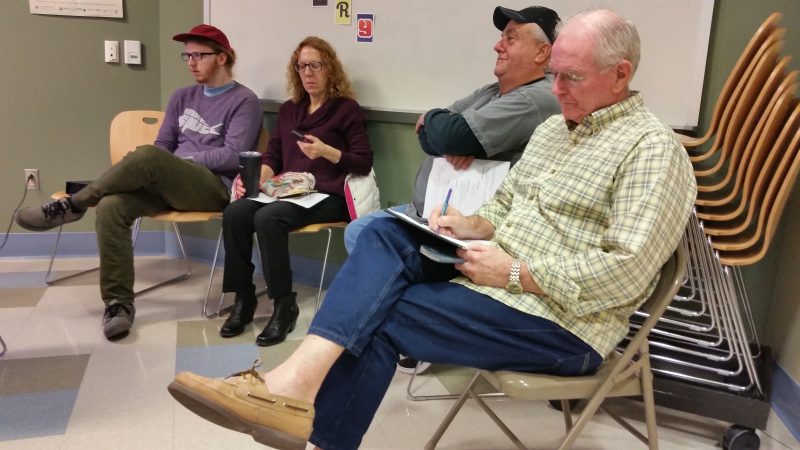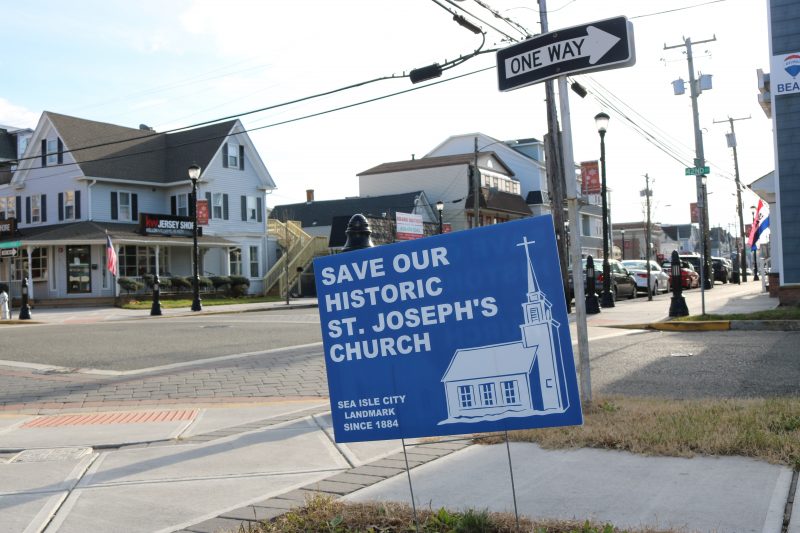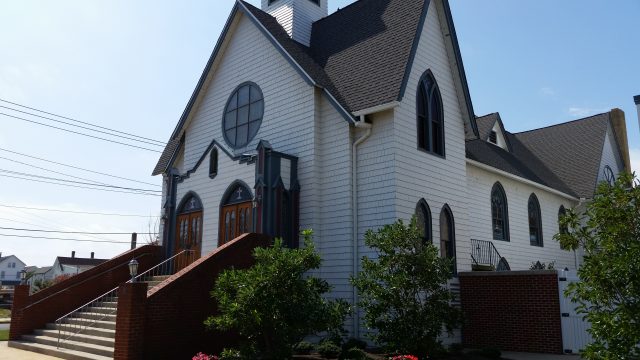By Donald Wittkowski
As a feud continues among parishioners over the fate of the St. Joseph Catholic Church’s 135-year-old chapel, a new engineering study has concluded that the building is in “fair” condition overall.
Father Joseph Perreault, the pastor, told parishioners in the Jan. 20 church bulletin that the building’s roof is in “good” condition. The study also found “areas of concern,” including evidence of possible termite infestation, cracks in the timber arches inside the sanctuary and discoloration in the floor.
The church has hired an environmental firm to conduct tests on the discolored areas to determine the source, Father Perreault said in the bulletin.
Parish member Jackie Meiluta, who chairs a committee that is studying the old church’s future, noted there is concern about potential mold contamination.
“That’s an immediate health issue, of course,” she said in an interview Monday.
Meiluta characterized the engineering report as a “cursory study” of the building’s structural condition. She said it recommended five follow-up studies related to the areas of concern. The most important one will investigate the possibility of mold contamination and develop a cleanup plan, if necessary.
Mike McHale, a former Sea Isle City mayor who leads a church faction that wants to save the historic chapel, believes the engineering report will bolster efforts to preserve the building.
“They say there’s nothing insurmountable,” McHale said of the problems cited in the report. “It can be fixed.”
McHale’s faction is adamantly opposed to efforts to demolish the old church, while members of the Catholic Strong Committee, chaired by Meiluta and supported by Father Perreault, believe the building should be considered for redevelopment as a spiritual life center.

Meiluta stressed that no final decisions have been made on whether to demolish or preserve the old church, which dates to 1884 and stands at the corner of 44th Street and Landis Avenue.
“There were never any imminent plans to demolish the church. That’s the big misconception,” Meiluta said. “The wrecking ball was never imminent.”
However, parishioners who want to preserve the chapel are fearful that the church’s leadership has plans to tear down the building. They have launched a “Save St. Joseph’s Historic Church” Facebook campaign and have placed lawn signs throughout Sea Isle calling for the chapel to be preserved.
McHale vowed that the preservationists are willing to take their fight all the way up to the Vatican, if necessary. The building’s history and architecture are enough to justify saving it, he said.
“I think it’s still on the table to save it,” McHale said in an interview Monday.
McHale pointed out that the preservationists plan to form a fundraising committee to support their campaign.
“I’m sure we can raise enough money to restore the structure to the way it should be,” he said.

Discussions about the fate of the old chapel are part of a broader church strategy, known as the “Catholic Strong” fundraising campaign, to find ways to reinvigorate St. Joseph’s parish in the future, including creating a more robust senior ministry.
The Catholic Strong Committee wrote in a letter included in the Sept. 9 church bulletin that a study will assess the cost of rehabilitating the chapel into a spiritual center versus building new. A spiritual center is envisioned as meeting space, a venue for special events and possibly new classrooms, church officials have said.
The historic chapel stands side-by-side with the modern $7 million St. Joseph Catholic Church that opened in December 2011. The new church includes a 1,300-seat sanctuary serving as the main worship hall for the congregation.
The old 225-seat chapel is little-used these days. It is in need of a series of improvements, including new heating and air-conditioning, as well as plumbing and electrical repairs, Meiluta said. She noted that the church’s finance committee has approved a “bare bones” budget to maintain the building.
“We believe money is better invested in services and programs for people rather than maintaining a building that is rarely used. This may sound harsh but funds are limited and tough decisions need to be made, if not now, then in the coming years,” the Catholic Strong Committee said in a statement to parishioners.
In the meantime, Father Perreault has pledged to keep the parish informed about the old church’s condition as more information becomes available from the contractors that will study the discoloration and other concerns.

The dispute among the parishioners over the old chapel has left St. Joseph’s parish “in crisis,” according to the statement by the Catholic Strong Committee to church members.
“What began as a five-year Diocesan campaign to look to the future needs of our parish has erupted into a war being played out in spout-offs and lawn signs,” the statement says.
It goes on to say that the Catholic Strong Committee “regrets this schism in our parish.”
“We never intended to start a war; simply a dialogue about our future needs and about parish revitalization,” the statement says.
It concludes, “Regardless of the Catholic Strong campaign, now and in the coming years, St. Joseph’s can allocate available funds to a building that is rarely used or we can allocate available funds to enhanced services for seniors, improved opportunities for fellowship, new technology and easily accessible space. The members of the Parish Council, Finance Council and Catholic Strong Committee choose services.”
McHale, though, argued that the committee members have gotten it wrong. He said they should be focused instead on finding ways to preserve and restore the old church for the future.
“We feel the majority of parishioners want the church to stay,” he said.








